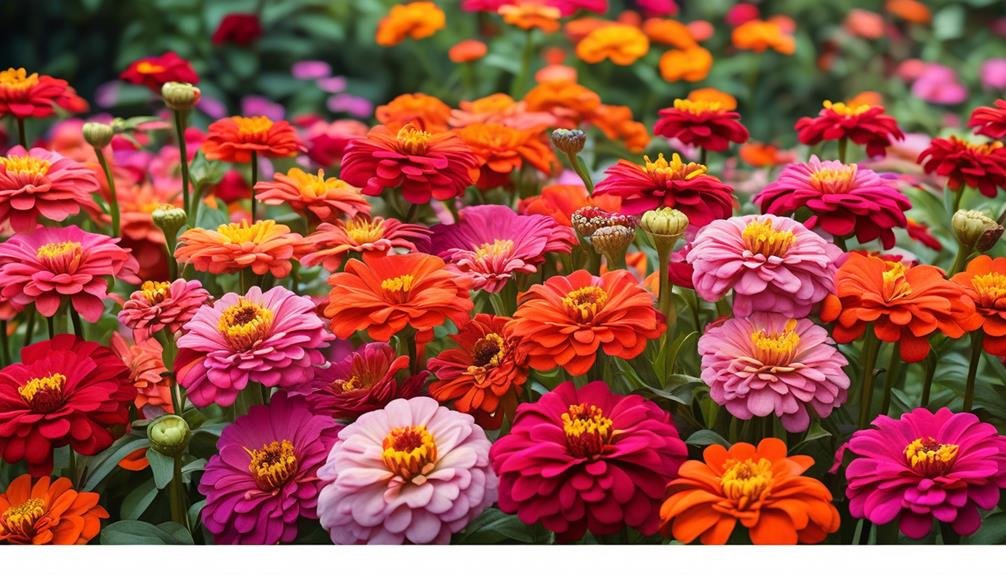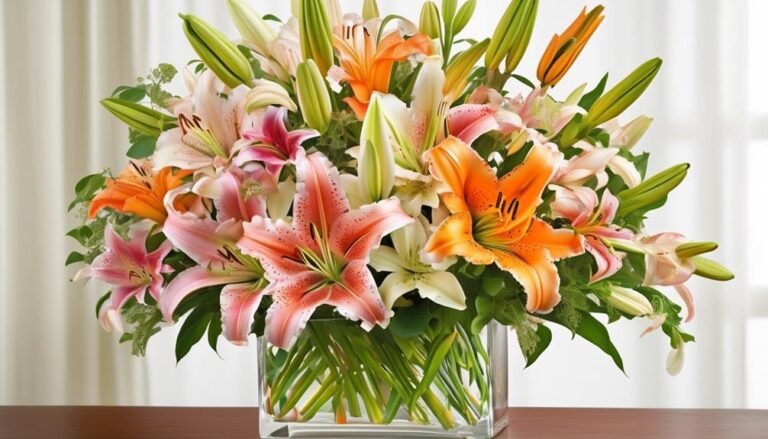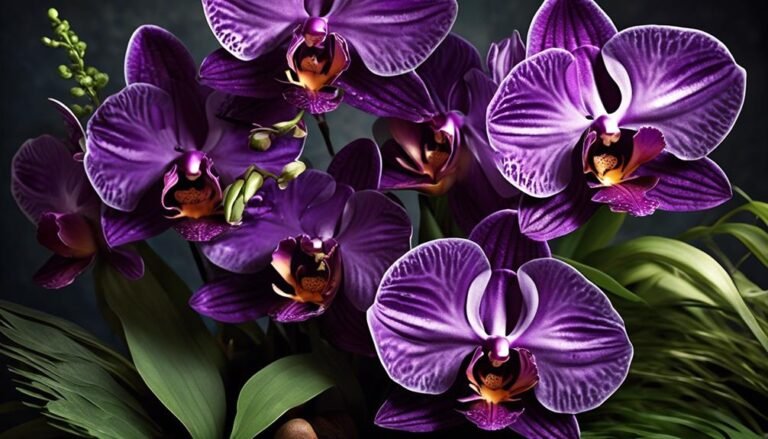Popular Types of Florist Flowers – Zinnia
Zinnias: The Unsung Heroes of Floral Arrangements
Zinnias are a versatile and resilient type of flower that can add a burst of color and natural charm to any floral arrangement. With a wide array of hues and textures, they are like a painter's palette, offering endless possibilities for elevating bouquets or garden beds.
Botanical Intricacies and Cultivation Techniques
Zinnias come in various shapes and sizes, from dainty to large blooms, and they belong to the Asteraceae family. These flowers thrive in sunny locations with well-drained soil, making them a popular choice for gardeners and florists alike. They are also known for their ability to attract butterflies and beneficial pollinators, adding to their appeal in gardens.
Unlocking Their Full Potential
To bring out the best in zinnias, it's essential to understand their cultivation needs. They prefer warm weather and can be easily grown from seeds, making them a cost-effective option for adding color to any outdoor space. With proper care and maintenance, zinnias can bloom continuously throughout the summer and into the fall, providing a long-lasting source of beauty.
Fascinating Subject for Gardening Enthusiasts
For gardening enthusiasts, delving into the world of zinnias can be a rewarding experience. Learning about the different varieties, from the classic 'Thumbelina' to the vibrant 'Benary's Giant,' opens up a treasure trove of floral knowledge and inspiration. Whether you're a seasoned florist or a budding green thumb, zinnias offer endless opportunities for creativity and exploration.
Scientific Name
Zinnia elegans, commonly known as zinnia, is a vibrant and diverse flower species belonging to the family Asteraceae, which also includes daisies and sunflowers. It's classified under the kingdom Plantae, division Magnoliophyta, class Magnoliopsida, order Asterales, family Asteraceae, and genus Zinnia. The specific epithet 'elegans' in its scientific name signifies elegance, reflecting the plant's graceful and showy nature.
Culturally, the zinnia flower symbolizes thoughts of an absent friend, lasting affection, goodness, and constancy. It's a popular choice for gardeners and florists due to its symbolic meaning and vibrant display of natural beauty.
Zinnia elegans thrives in well-drained soil and requires full sunlight for optimal growth. It can be grown by planting zinnia seeds directly in the garden after the last frost date or starting them indoors for transplanting. These flowers are relatively low maintenance, requiring regular watering and occasional fertilization.
Background History
Zinnias have a rich history deeply rooted in Mexican culture, where they were traditionally believed to ward off evil spirits and bring good health, known as 'mal de ojos.' They symbolize endurance, goodness, and constancy in various Mexican celebrations and rituals.
In the Victorian language of flowers, zinnias represented thoughts of absent friends, symbolizing lasting affection and remembrance. They're also associated with endurance and daily remembrance in some cultures, making them popular choices for memorial gardens and bouquets.
Introduced to Europe in the 18th century, zinnias captivated botanists and garden enthusiasts with their striking appearance. Named after Johann Gottfried Zinn, a prominent German botanist, zinnias gained popularity and underwent extensive cultivation, leading to the development of the wide range of colors and varieties available today.
The zinnia's journey from Mexico to global popularity showcases its adaptability and enduring appeal. Its vibrant hues, long-lasting blooms, and ability to attract pollinators have made it a staple in many gardens and floral arrangements worldwide, earning it a special place in the hearts of gardeners and flower enthusiasts everywhere.
Physical Description

Zinnias, originally from Mexico, have gained popularity due to their diverse sizes, unique petal formations, and striking color variations. They range in height from 0.1-1m with flower heads of 2-40cm in diameter.
Some varieties, like the Z. Giant Cactus, have curled petals, while the Z. California Giant comes in bright tones like orange and white with sizable flower heads reaching up to 15cm in diameter.
The Z. elegans (Dwarf Varieties) may be shorter at 0.1-0.5m, but still make a stately impression at 25cm tall. The Z. Oklahoma Mixed variety offers small blooms, around 6cm, making them perfect for cutting and using in arrangements.
Zinnias are low-maintenance, thriving in full sunlight and well-draining soil, and requiring minimal water once established. Their vibrant colors attract butterflies, making them a beneficial addition to any garden.
Zinnias are also excellent for cut flower arrangements, bringing their bright and varied hues indoors. Their ability to attract pollinators and long-lasting cut flowers make them a delightful and practical choice for any gardener.
Colours and Characteristics
Zinnias are a versatile and captivating choice for floral displays and gardens, offering a wide range of vibrant colors and distinctive petal formations.
Their vivid hues, ranging from red, orange, yellow, white, to purple, make them perfect for various floral arrangements.
The diverse petal structures, including single, double, or dahlia-like, provide a unique appearance in bouquets and garden displays.
Zinnias' sturdy stems make them ideal for cut flower arrangements, aligning with contemporary floral design trends.
Additionally, they attract pollinators like bees and butterflies, supporting the natural ecosystem and adding a lively touch to floral arrangements.
Varieties Available

Zinnias are a popular choice for gardeners and floral enthusiasts due to their vibrant colors and diverse petal formations. When selecting zinnias for cultivation, it's important to consider the variety that best suits your needs. Here are some popular zinnia varieties and their distinct features:
- Zinnia 'Pop Art':
- Large, golden flowers with red flecks and tall stems, making it an excellent cut flower.
- Zinnia California Giant:
- Hardy variety with a H2 rating, available in bright tones like orange and white, and suitable for cut flowers.
- Zinnia 'Peppermint Stick Mixed':
- Eye-catching with dappled colors against a white background, best appreciated up close in a vase.
- Zinnia 'Queen Red Lime':
- Unusual red flowers with lime tips, ideal for filling gaps in the border, suitable for container displays, and a great cut flower.
- Zinnia 'Dwarf Varieties':
- Stately in a vase at 25cm tall, best mixed with larger flowers for contrast, making them suitable for cut flower arrangements.
When cultivating zinnias, ensure they receive full sun, well-drained soil, and moderate watering. Regular deadheading promotes continuous blooming. For zinnias as cut flowers, harvest them when the buds are just about to open in the morning, and place them in a bucket of warm water. Remove the lower leaves and arrange them in a vase for a stunning display.
Choose the zinnia variety that best suits your needs and enjoy their vibrant beauty in your garden or floral creations.
Seasonal Availability
When planning your seasonal floral arrangements, it's important to consider the availability of various zinnia varieties to ensure a diverse and vibrant selection. Zinnias are generally available in summer and autumn, making them ideal for seasonal floral displays.
- Vibrant Summer Display: Zinnias such as Z. California Giant and Z. elegans (Dwarf Varieties) are perfect for adding bursts of color and vibrancy to your summer-themed floral arrangements.
- Autumnal Elegance: Consider using Z. elegans Benarys Giant and Z. Giant Cactus zinnia varieties for creating elegant and richly-hued autumnal floral displays.
- Summer Exclusive: Some zinnia varieties, like Z. Oklahoma Mixed and Z. Peppermint Stick Mixed, are specifically known for their availability during the summer season, capturing the essence of summer in your arrangements.
- Unique Visual Appeal: Pop Art Zinnias, with their visually stunning appearance, are also available during summer and autumn, adding a distinctive touch to arrangements during these seasons.
Care Tips

Zinnias are beautiful and vibrant flowers that require proper care to thrive. Here are some essential care tips to keep your zinnias healthy and blooming:
Watering:
Keep the soil consistently moist, especially during dry periods, to ensure the well-being of zinnias.
Deadheading:
Regularly remove spent blooms to encourage continuous flowering and maintain a neat appearance.
Fertilizing:
Apply a balanced fertilizer every 4-6 weeks to promote healthy growth and vibrant blooms.
To prevent powdery mildew, ensure good air circulation around the plants and avoid overhead watering. Aphids can be controlled by spraying the plants with water or using insecticidal soap.
Zinnias can be easily grown from seeds sown directly into the garden soil after the last frost date, or for early blooms, start seeds indoors 4-6 weeks before the last expected frost.
What Are the Characteristics and Care Tips for Zinnia Flowers?
Zinnia flowers come in various types of florist flowers, including dahlia-flowered, cactus, and pompom. They thrive in full sunlight and well-drained soil. Keep the soil consistently moist and deadhead the flowers for continuous blooms. Zinnias are low-maintenance, making them perfect for beginner gardeners.
Conclusion
Zinnias are a versatile and low-maintenance choice for gardeners and floral enthusiasts. Their vibrant colors and variety of petal types make them a beautiful addition to any garden or floral arrangement.
They're also great for attracting pollinators, adding an extra benefit to their already impressive qualities.
Whether you're a seasoned gardener or just starting out, zinnias are a must-have for adding color and life to your outdoor space.






